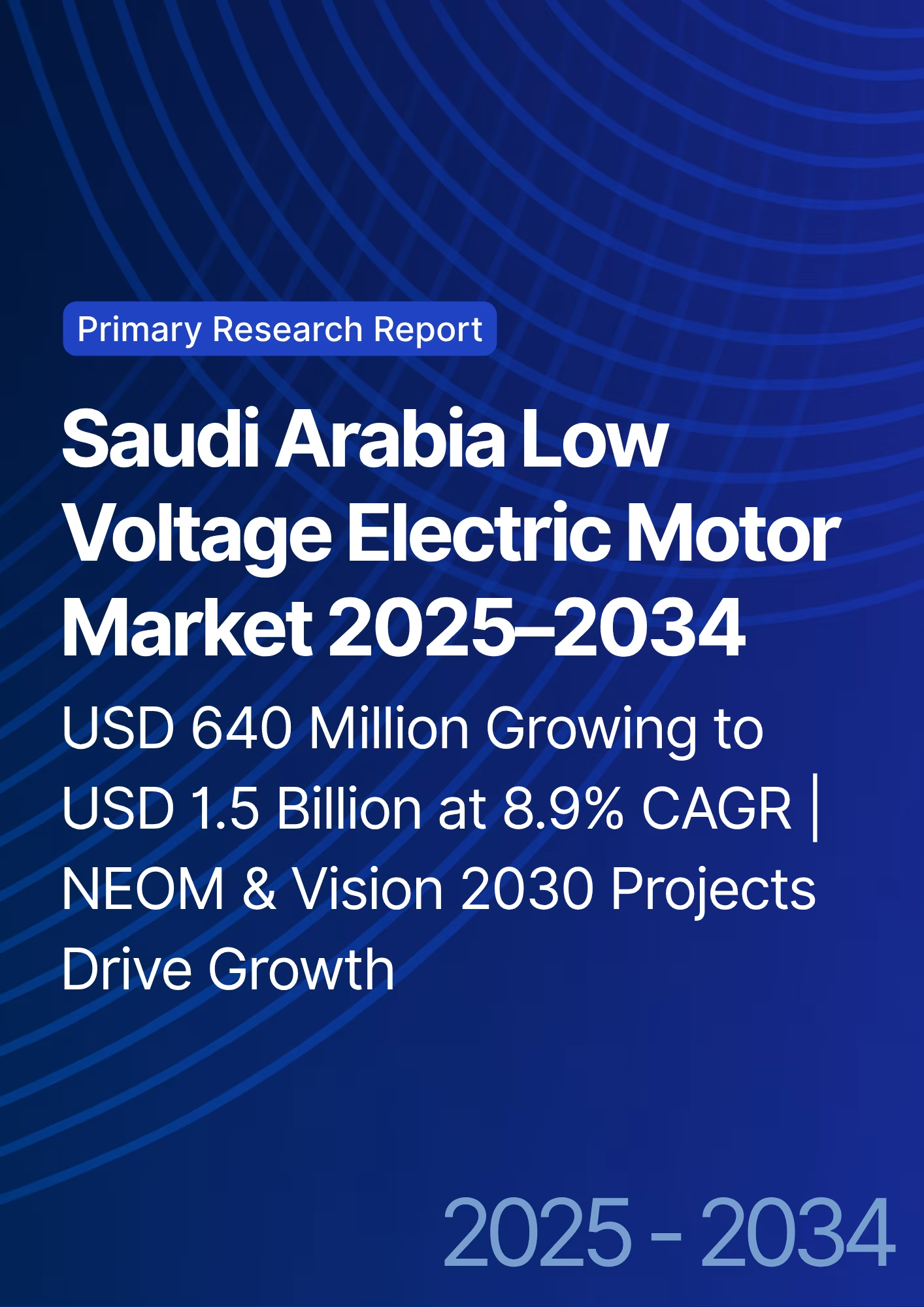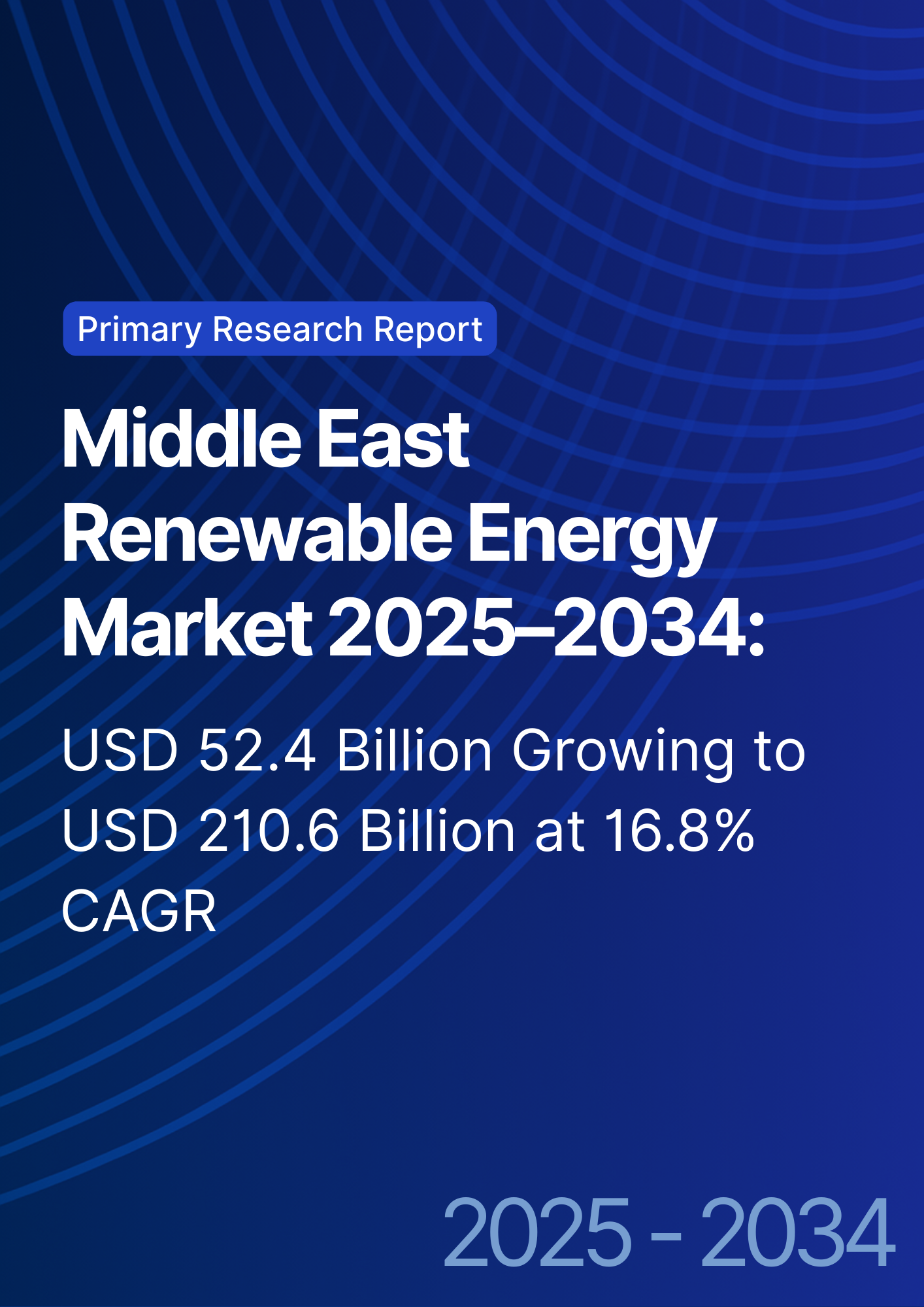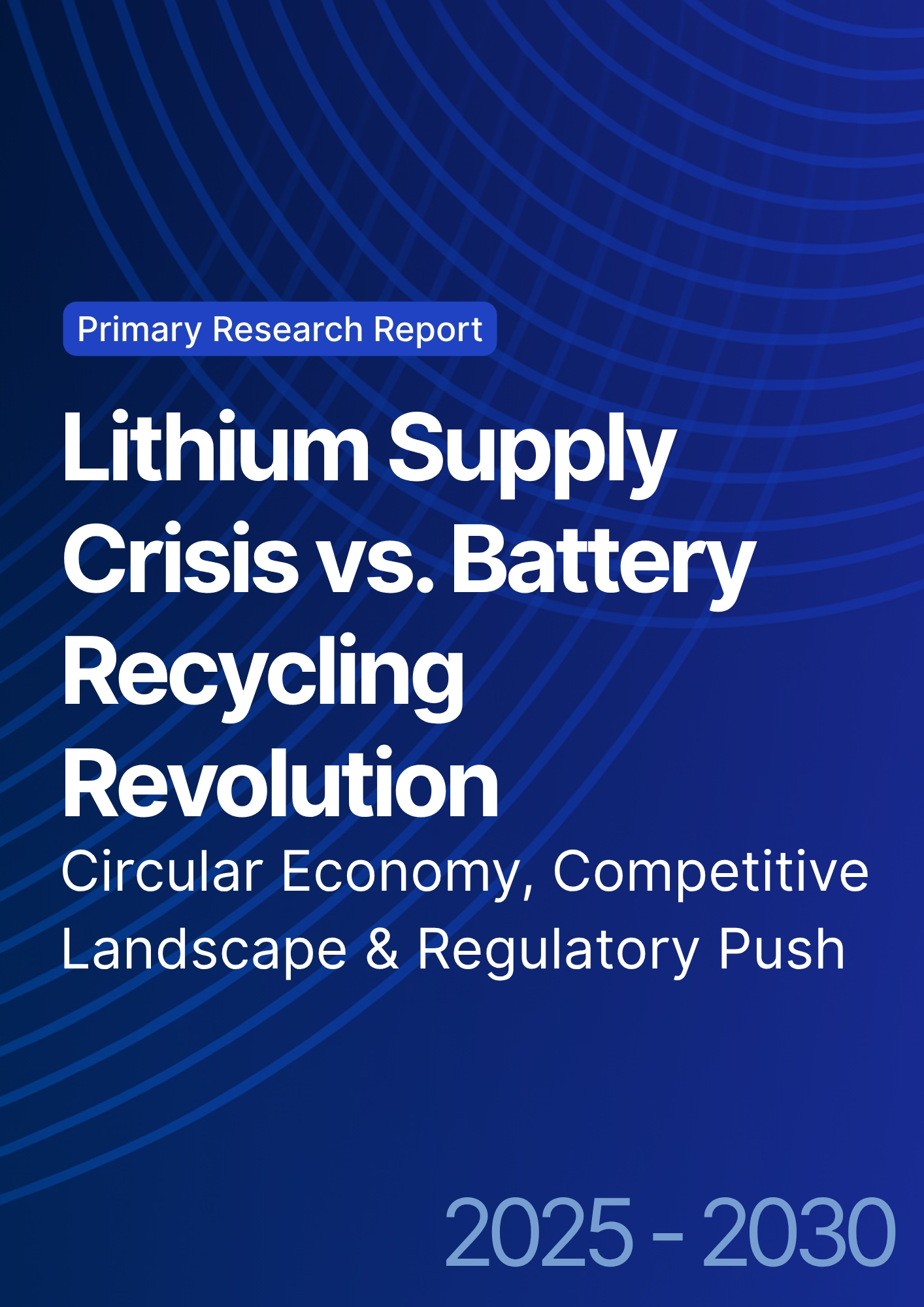

68 Circular Road, #02-01 049422, Singapore
Revenue Tower, Scbd, Jakarta 12190, Indonesia
4th Floor, Pinnacle Business Park, Andheri East, Mumbai, 400093
Cinnabar Hills, Embassy Golf Links Business Park, Bengaluru, Karnataka 560071
Connect With Us
Saudi Arabia Low Voltage Electric Motor Market 2025–2034: USD 640 Million Growing to USD 1.5 Billion at 8.9% CAGR | NEOM & Vision 2030 Projects Drive Growth
The Saudi Arabian low voltage electric motor market is forecast to expand from USD 640 million in 2025 to USD 1.5 billion by 2034, growing at a CAGR of 8.9%. Growth is primarily driven by the Kingdom’s industrial diversification, infrastructure expansion under Vision 2030, and the surge in sustainable megaprojects like NEOM, The Line, and Qiddiya. Demand from HVAC, water treatment, oil & gas, and manufacturing sectors continues to rise as the country transitions to energy-efficient, IE3–IE4-rated motors. With incentives for local manufacturing, retrofitting programs, and smart motor integration, Saudi Arabia is positioning itself as a GCC leader in motor efficiency innovation.

What's Covered?
Report Summary
Key Takeaways
- Market to rise from USD 640M (2025) to USD 1.5B (2034) at 8.9% CAGR.
- NEOM and Vision 2030 projects driving over 35% of new installations.
- Energy-efficient motors (IE3–IE4) to represent 72% of total demand by 2034.
- Industrial automation and HVAC modernization boosting consumption by 12% annually.
- Local assembly plants to increase market localization to 55% by 2032.
- Water treatment and desalination sector demand up 3.2× by 2034.
- Smart motor systems expected to capture USD 240M market share.
- Export potential to GCC nations reaching USD 110M annually by 2034.
- Oil & gas retrofitting programs driving replacement demand worth USD 300M.
- Government procurement mandates to favor high-efficiency and locally made motors from 2026.
Key Metrics
Market Size & Share
The Saudi low voltage electric motor market will grow from USD 640 million in 2025 to USD 1.5 billion by 2034, representing an 8.9% CAGR. The surge is underpinned by Vision 2030’s industrial diversification, with key contributions from construction, energy, and water management projects. NEOM’s industrial zones, including Oxagon and Trojena, are projected to absorb over 120,000 motors annually by 2030. The HVAC sector, a major consumer, accounts for 28% of total demand, while water desalination plants contribute another 18%. Government initiatives mandating IE3 motor adoption from 2026 will accelerate replacement cycles, expanding the retrofit and upgrade market worth USD 300M+.
Market Analysis
Saudi Arabia’s industrial modernization is propelling sustained investment in energy-efficient and smart motor systems. IE3 and IE4 motors, characterized by 15–20% higher operational efficiency, are increasingly replacing legacy IE1 units across key sectors. The manufacturing and oil & gas industries together constitute 45% of total installations, driven by automation and maintenance optimization goals. Smart sensors and IoT-enabled monitoring platforms are gaining traction, providing predictive failure analysis and reducing downtime by up to 30%. The National Industrial Development and Logistics Program (NIDLP) and Saudi Energy Efficiency Center (SEEC) are setting localized efficiency benchmarks, expected to elevate domestic production capacity by 70% by 2032.
.png)
Trends & Insights
- Energy Transition: Policy mandates for IE3+ motors align with Vision 2030 sustainability goals.
- NEOM Deployment Surge: NEOM alone to consume USD 250M worth of motors by 2034.
- Water Sector Modernization: Desalination plants to drive 3.2× demand growth.
- Smart Motors: 240M market for IoT-integrated motors by 2034.
- Automation Expansion: Industrial robotics adoption boosting motor consumption by 15% annually.
- Localization Push: 55% local assembly by 2032 under the Made in Saudi initiative.
- Renewable Integration: Solar and hydrogen projects utilizing energy-optimized drives.
- Retrofit Demand Spike: Replacement of outdated units in oil & gas worth USD 300M.
- GCC Export Growth: Saudi firms expected to supply USD 110M/year of motors to regional projects.
- Regulatory Enforcement: SEEC’s audit program to ensure 100% IE3 compliance by 2028.
Segment Analysis
The market divides into industrial (45%), commercial (30%), and infrastructure (25%) applications. Industrial use especially in oil & gas, desalination, and manufacturing dominates due to high-duty cycle requirements. Commercial sectors, driven by smart HVAC retrofits and real estate expansion, are witnessing double-digit growth, particularly in NEOM and Riyadh. Infrastructure projects, including public utilities and transportation hubs, will account for 25% of total motor installations by 2034. By motor type, AC motors lead with 78% market share, while DC and permanent magnet synchronous motors (PMSM) collectively account for 22%, favored for automation and energy efficiency.
.png)
Geography Analysis
NEOM, Riyadh, and the Eastern Province represent the strongest growth corridors. NEOM alone will absorb 35% of incremental demand, driven by construction and industrial automation. Riyadh’s industrial corridors (MODON) and Jubail’s petrochemical plants are key centers for IE3–IE4 upgrades. Western Region projects like Red Sea Global and Qiddiya will accelerate adoption in the commercial building segment. Eastern Province, home to Aramco’s downstream facilities, remains the largest retrofit market. Nationwide, government-backed infrastructure and renewable projects are projected to deploy over 600,000 low voltage units annually by 2034.
Competitive Landscape
Key players include ABB, Siemens, WEG, TECO, Schneider Electric, and Nidec, alongside local manufacturers such as Alfanar, Zamil Industrial, and Saudi Electric Industries. ABB and Siemens dominate industrial automation projects, providing IE4-compliant motors integrated with digital monitoring systems. WEG and Schneider are expanding smart motor portfolios in NEOM and Red Sea Global projects. Local companies, supported by Vision 2030’s localization agenda, are increasing assembly capacity and regional distribution. Partnerships between Saudi Aramco, SEEC, and NIDLP aim to develop R&D hubs for high-efficiency drive systems. Competitive differentiation is focusing on energy efficiency, IoT integration, and cost-optimized local manufacturing, positioning Saudi Arabia as a regional hub for next-gen electric motor production.
.png)
Report Details
Proceed To Buy
Want a More Customized Experience?
- Request a Customized Transcript: Submit your own questions or specify changes. We’ll conduct a new call with the industry expert, covering both the original and your additional questions. You’ll receive an updated report for a small fee over the standard price.
- Request a Direct Call with the Expert: If you prefer a live conversation, we can facilitate a call between you and the expert. After the call, you’ll get the full recording, a verbatim transcript, and continued platform access to query the content and more.


68 Circular Road, #02-01 049422, Singapore
Revenue Tower, Scbd, Jakarta 12190, Indonesia
4th Floor, Pinnacle Business Park, Andheri East, Mumbai, 400093
Cinnabar Hills, Embassy Golf Links Business Park, Bengaluru, Karnataka 560071
Request Custom Transcript
Related Transcripts
$ 1445


68 Circular Road, #02-01 049422, Singapore
Revenue Tower, Scbd, Jakarta 12190, Indonesia
4th Floor, Pinnacle Business Park, Andheri East, Mumbai, 400093
Cinnabar Hills, Embassy Golf Links Business Park, Bengaluru, Karnataka 560071













